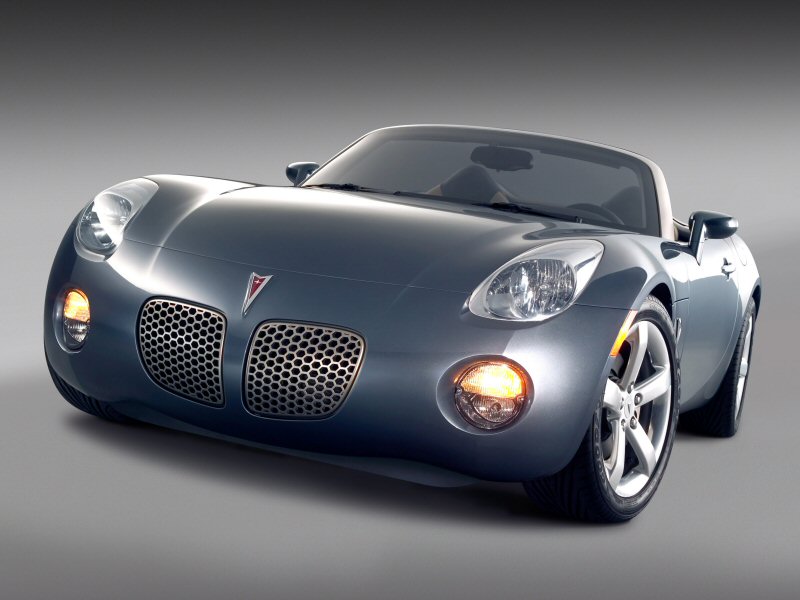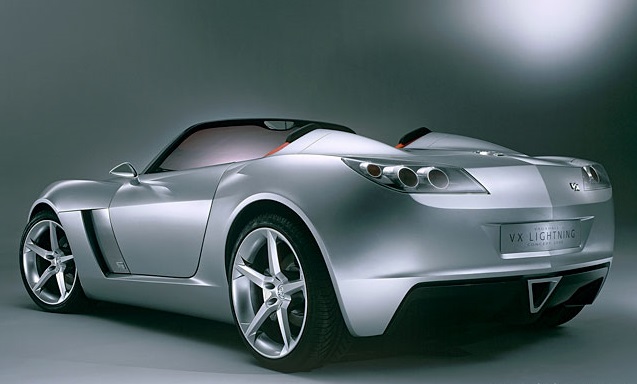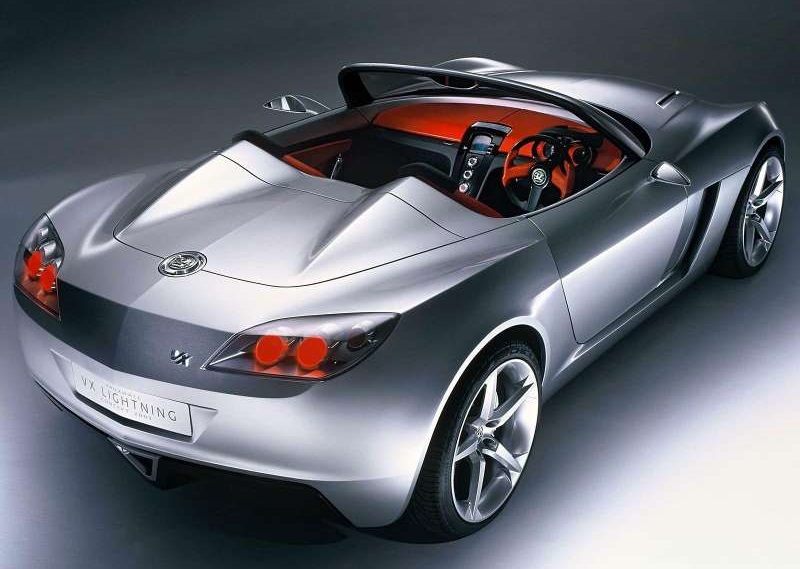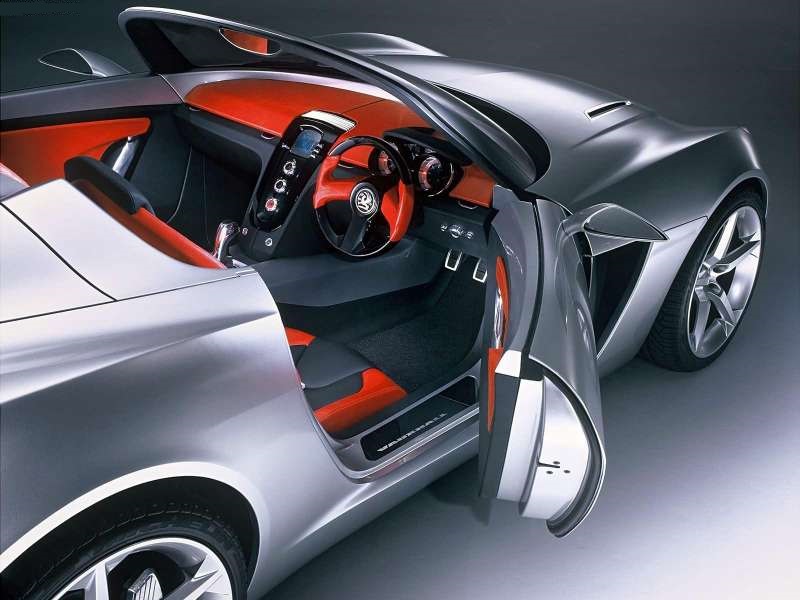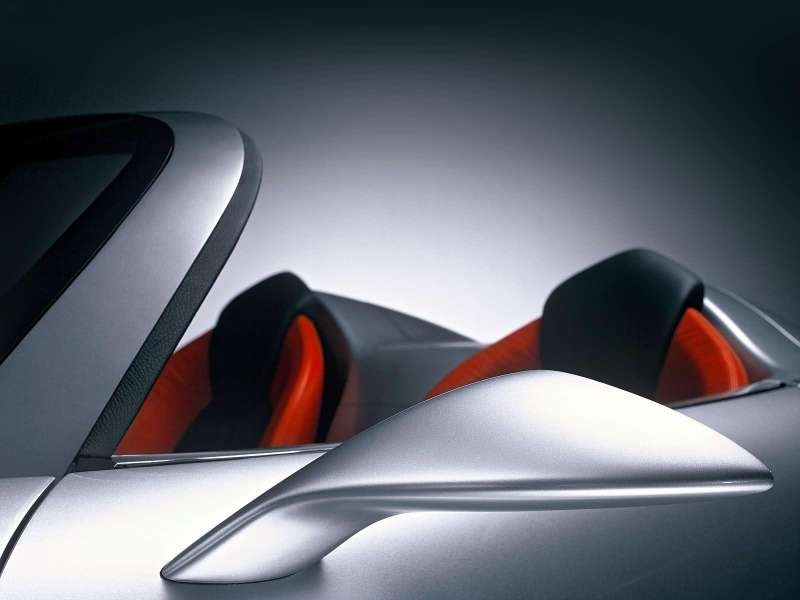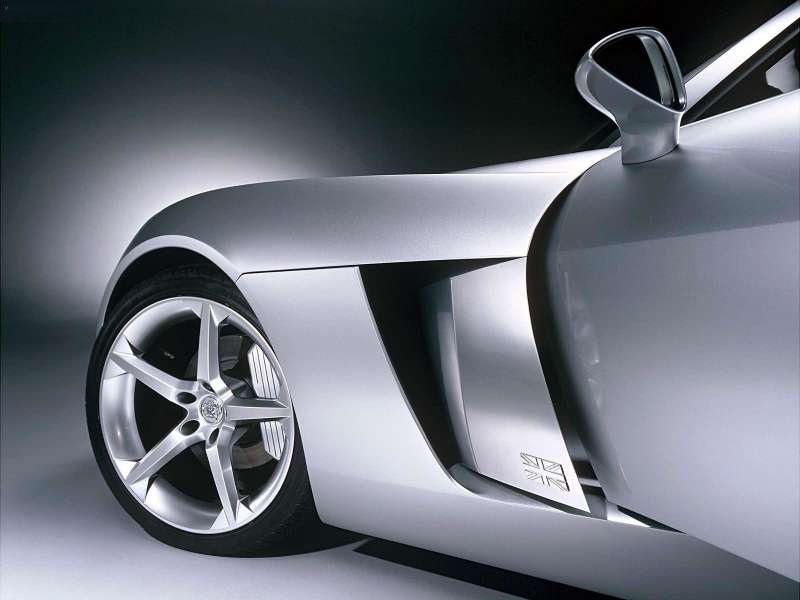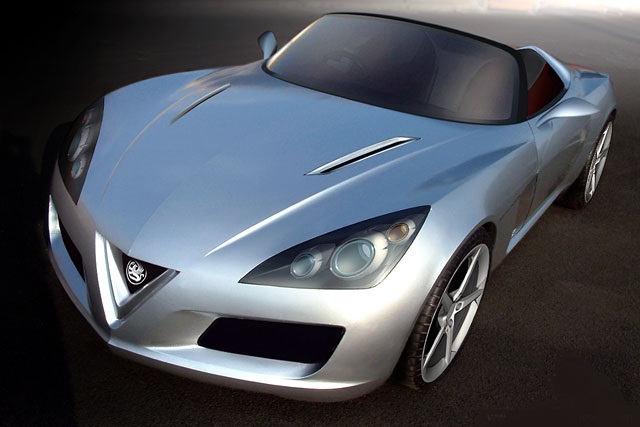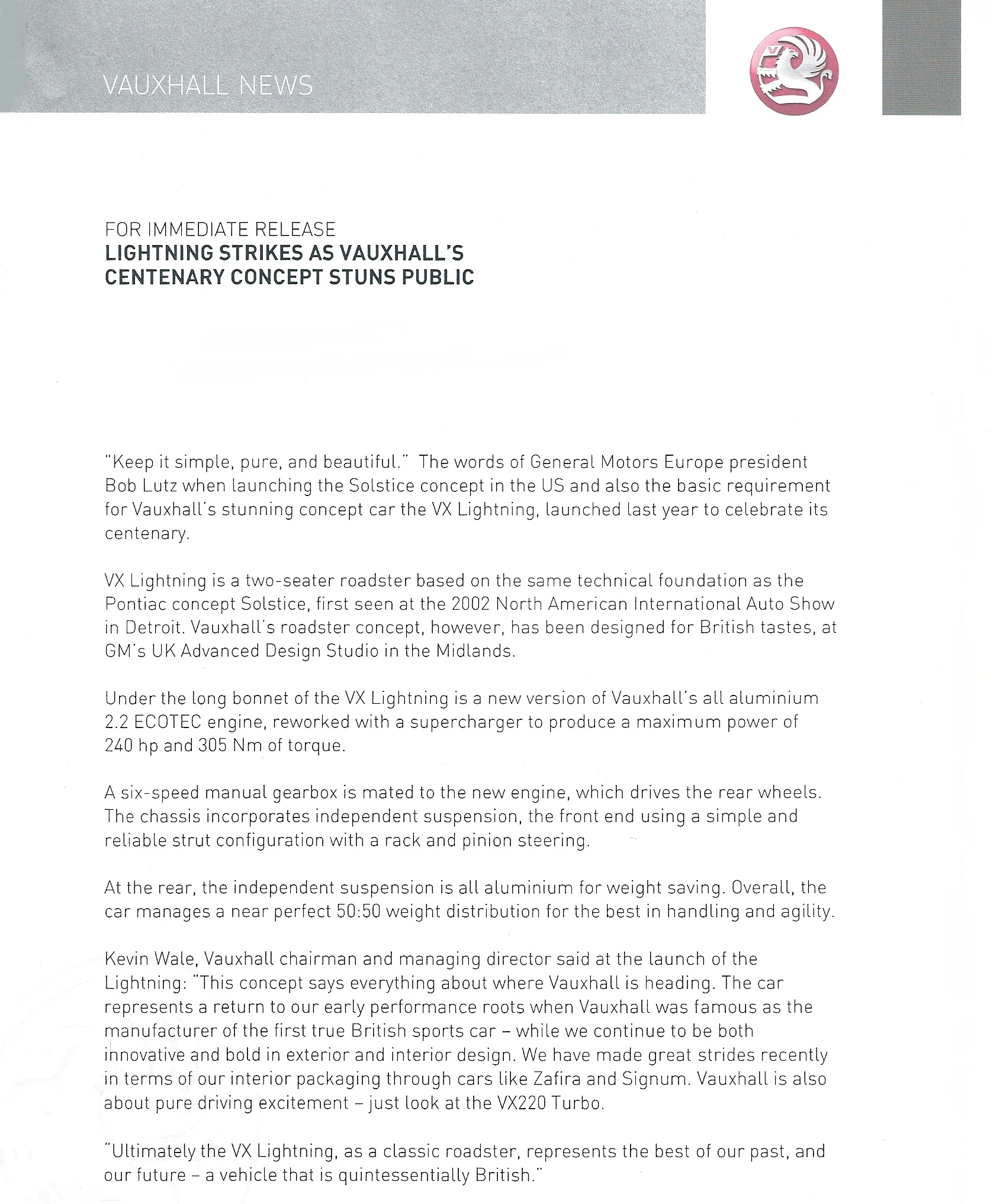-
VAUXHALL VX LIGHTNING
CONCEPT

HEAVILY MODIFIED GENERAL MOTORS KAPPA
PLATFORM
In order to go into a detailed description of the Vauxhall VX Lightning Concept it is necessary to go back to the inception of the Kappa platform. The General Motors Kappa platform was designed specifically as a sub-compact rear wheel drive chassis for open top roadster applications. The architecture first debuted as a production vehicle in 2006 as the Pontiac Solstice, in 2007 as the Saturn Sky and then as a re-badged Sky in the form of the Opel GT for Europe. It was also sold in South Korea as the Daewoo G2X. A hardtop coupe version of the Pontiac Solstice was produced briefly for the 2010 model year until Kappa production ended with General Motors filing for bankruptcy in July 2009. s a result the Kappa platform was sold to Spanish Car maker Tauro who now use the chassis for their production roadster the Tauro V8 Spider.

A GM PRESS PICTURE OF THE HIGHLY ADAPTABLE KAPPA
PLATFORM
In 2002, the Pontiac Solstice Concept was first shown in two forms,
a drivable roadster convertible, and a design study of a fastback
coupe. The concept was received very well at the 2002 NAIAS. The
problem was the drivable roadster concept car shown had been
cobbled together from many different components,
including using a heavily modified portion of the GM Delta
platform. The thinking at the time was that the architecture might
be used to produce the Solstice at some point in the future. Due to
the overwhelmingly positive reaction GM decided to go for
a
production version of the original concept as a high style, low
volume niche car for enthusiasts. The problem was they did not have
a production ready platform to build it on. Therefore, the Kappa
platform was developed to provide the necessary structure for a
two-seat, rear-wheel drive convertible. It features hydro-formed
rails and a tunnel structure similar to the Corvette
architecture, and is designed for a short-long-arm suspension front
and rear. It features rear wheel drive, longitudinal-mounted
transmission and front engine mounted well back for weight
distribution. GM claimed that the platform was only designed to
accommodate the ECOTEC Family II engine as well as only being able
to be LHD.
